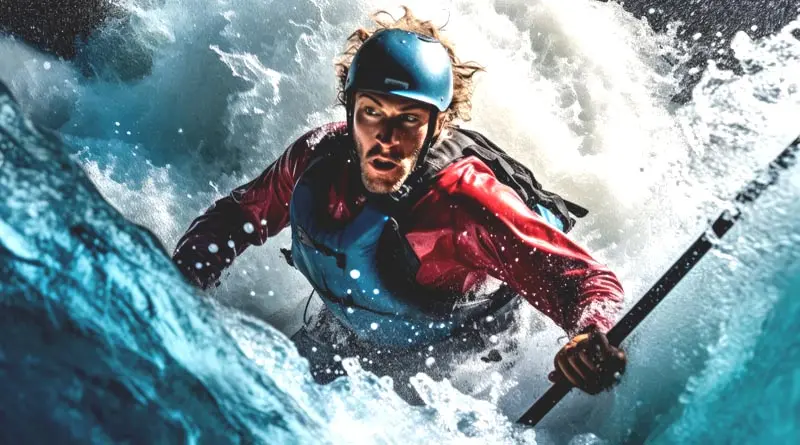
How Do I Perform A Self-rescue If My Canoe Capsizes?
It was a crisp morning, the kind where the sun rises slowly, casting golden reflections on the river’s surface. I had just pushed my canoe into the water, ready for another day of paddling through the wilderness. The river was calm, a mirror of tranquility, but I knew that appearances could be deceiving. The question that lingered in my mind, as it does for many paddlers, was simple yet daunting: “How do I perform a self-rescue if my canoe capsizes?”
Canoeing, with its blend of serenity and challenge, always holds the possibility of capsizing. It’s an eventuality that every paddler must prepare for, not just to save their gear, but to save themselves. The cold grip of the river, the sudden disorientation, and the pressing need to regain control—all these elements form a situation where knowing how to perform a self-rescue becomes not just a skill, but a necessity.
Exploring the Options and Obstacles
When your canoe capsizes, you find yourself confronted with a series of immediate challenges. The first is the shock of immersion. Even in the warmest weather, the water can be startlingly cold. Your clothes become heavy, and your movements sluggish. Panic can set in quickly, making it difficult to think clearly.
Then there’s the issue of orientation. In the chaos, it’s easy to lose your sense of direction. Which way is the shore? Where is your canoe? The current might be pulling you downstream, adding to the confusion.
Finally, there’s the physical challenge of righting the canoe and getting back in. It sounds straightforward, but in reality, it can be a grueling task. The canoe is often filled with water, making it heavy and difficult to manage. The river’s current, no matter how gentle, adds an element of resistance that can sap your strength.
The Best Solution and How to Implement It
The key to a successful self-rescue lies in preparation and practice. Here’s the step-by-step solution to handling a capsized canoe:
- Stay Calm and Assess the Situation: The moment you hit the water, your instinct might be to panic. Fight this urge. Take a deep breath, stay calm, and quickly assess your situation. Look for your paddle, your canoe, and any floating gear. Identify the direction of the current and the nearest shore.
- Secure Your Paddle and Canoe: The paddle is your lifeline; don’t let it drift away. Grab it first, then swim to your canoe. If you have a rope or tether, use it to secure the paddle to the canoe.
- Empty the Canoe of Water: This is perhaps the most physically demanding part. If you’re alone, position yourself at the middle of the canoe, where it’s easiest to lift. Lift one end of the canoe out of the water, letting the water drain out as much as possible. If you’re with a partner, you can work together, one lifting each end.
- Right the Canoe: Once most of the water is out, flip the canoe back over. This can be done by pushing down on one side and pulling up on the other. Ensure it’s positioned correctly, with the bow and stern aligned with the current.
- Re-enter the Canoe: This is the most critical and often the most challenging part. Position yourself at the center of the canoe. Kick your legs to give yourself a boost and slide your chest onto the canoe. Once you’re stable, swing your legs in one at a time. If you’re with a partner, one person should stabilize the canoe while the other climbs in.
- Bail Out Remaining Water: Even after righting the canoe, there will likely be some water left inside. Use a bailer or sponge to remove as much as possible to ensure the canoe remains stable.
- Paddle to Safety: With the canoe righted and yourself back inside, paddle calmly to the nearest shore to regroup and reassess your situation.
Resources and Tools Needed
To successfully perform a self-rescue, you’ll need the following tools:
- Paddle: Your primary tool for movement and control.
- Rope or Tether: Useful for securing your paddle and gear.
- Bailer or Sponge: Essential for removing water from the canoe.
- Life Jacket: Always wear one; it provides buoyancy and can save your life.
- Dry Bag: Keeps your essentials like a phone, map, or first aid kit dry.
Conclusion
The river demands respect, and with it comes the responsibility of preparation. Knowing how to perform a self-rescue when your canoe capsizes is more than just a skill—it’s a testament to your readiness and resilience. As I paddled down the river that day, the sun now high in the sky, I felt a deep sense of calm. The water may be unpredictable, but I knew I was prepared. The knowledge of self-rescue didn’t just make me safer; it made me a better paddler. So, the next time you push off into the unknown, carry with you the confidence that comes from knowing you can face whatever challenges the river throws your way.






